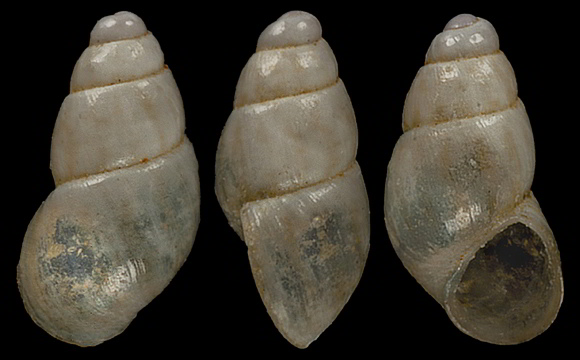
Grazer and detritus feeder in the infralittoral and maybe deeper: « …the species is likely associated to the algal film on the pebbles of the lower littoral zone, commonly present in the Northern Ionian Sea. This could be inferred by the finding, along the Northern coast of Catania, of some fresh-collected specimens of the new species in materials from 6-8m depth, associated with numerous specimens of the congener S. turriculata and, by analogy, by recent observations of one of us (DS) on the habit of the similar congener S.scillae. » – Romani & Scuderi: “A new species of Setia H. Adams & A. Adams,1852 (Prosobranchia Caenogastropoda Rissoidae) from the Mediterranean Sea”, Biodiversity Journal vol. VI (4), december 2015, p.845.
« Teleoconch with 2.8 convex whorls, with maximum curvature just under the middle of the whorl. Sculpture absent, except for faint prosocline axial growth lines. Suture quite deep, in fresh specimens is visible a “false suture” marking the internal contact between the whorls. Spire moderately high, whorls have conspicuous increase in size. Last whorl large, inflated but not globose, cylindrical, 71% of shell length. Base rounded, slightly curving, almost straight in some specimens. Aperture large, oval, drop-shaped, oblique with continuous and simple peristome (not thickened, smooth inside) and posterior angulation. Parietal and columellar regions rather straight or gently angulated. Outer lip well rounded. Seen from aside, the edge of the outer lip is orthocline, gently curved in the middle, and straight or shallow concave near the suture. It is clearly reflexed outwards. Umbilicus reduced to a very narrow chink. »
« Teleoconch with 2.8 convex whorls, with maximum curvature just under the middle of the whorl. Sculpture absent, except for faint prosocline axial growth lines. Suture quite deep, in fresh specimens is visible a “false suture” marking the internal contact between the whorls. Spire moderately high, whorls have conspicuous increase in size. Last whorl large, inflated but not globose, cylindrical, 71% of shell length. Base rounded, slightly curving, almost straight in some specimens. Aperture large, oval, drop-shaped, oblique with continuous and simple peristome (not thickened, smooth inside) and posterior angulation. Parietal and columellar regions rather straight or gently angulated. Outer lip well rounded. Seen from aside, the edge of the outer lip is orthocline, gently curved in the middle, and straight or shallow concave near the suture. It is clearly reflexed outwards. Umbilicus reduced to a very narrow chink. »
Possible downslope transportation.
57m deep, in grit, near “La Montagna” submerged pinacle, Scilla, Calabria, SW. Italy. 2,1mm. Paratype. Original pictures provided by A. Nappo (IT) – (CC BY-NC-SA).